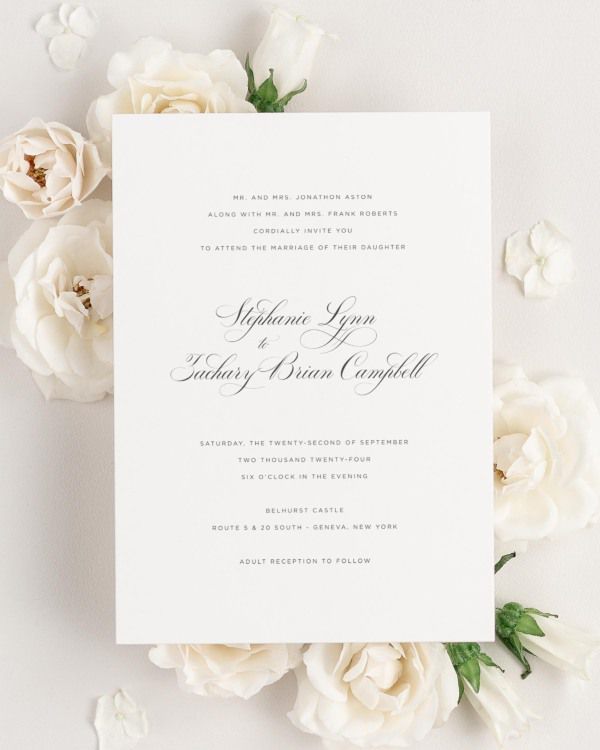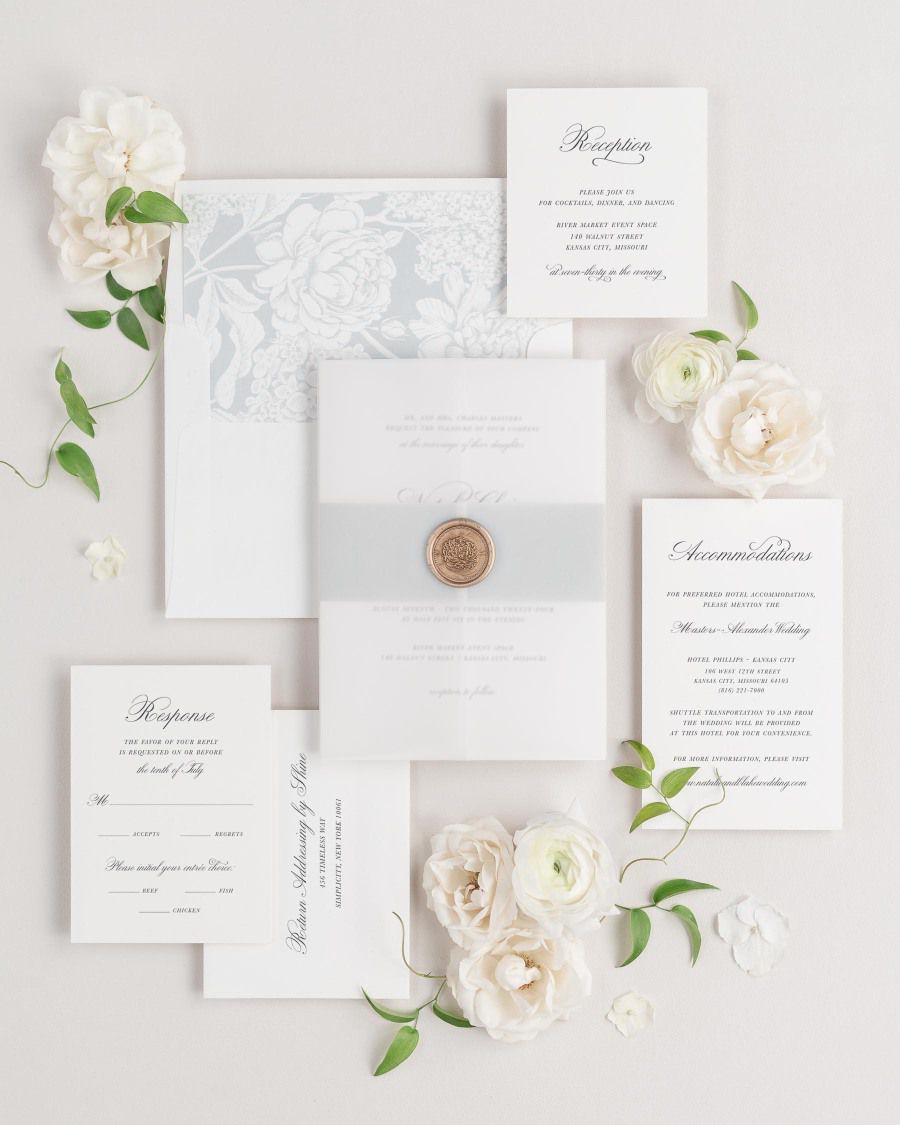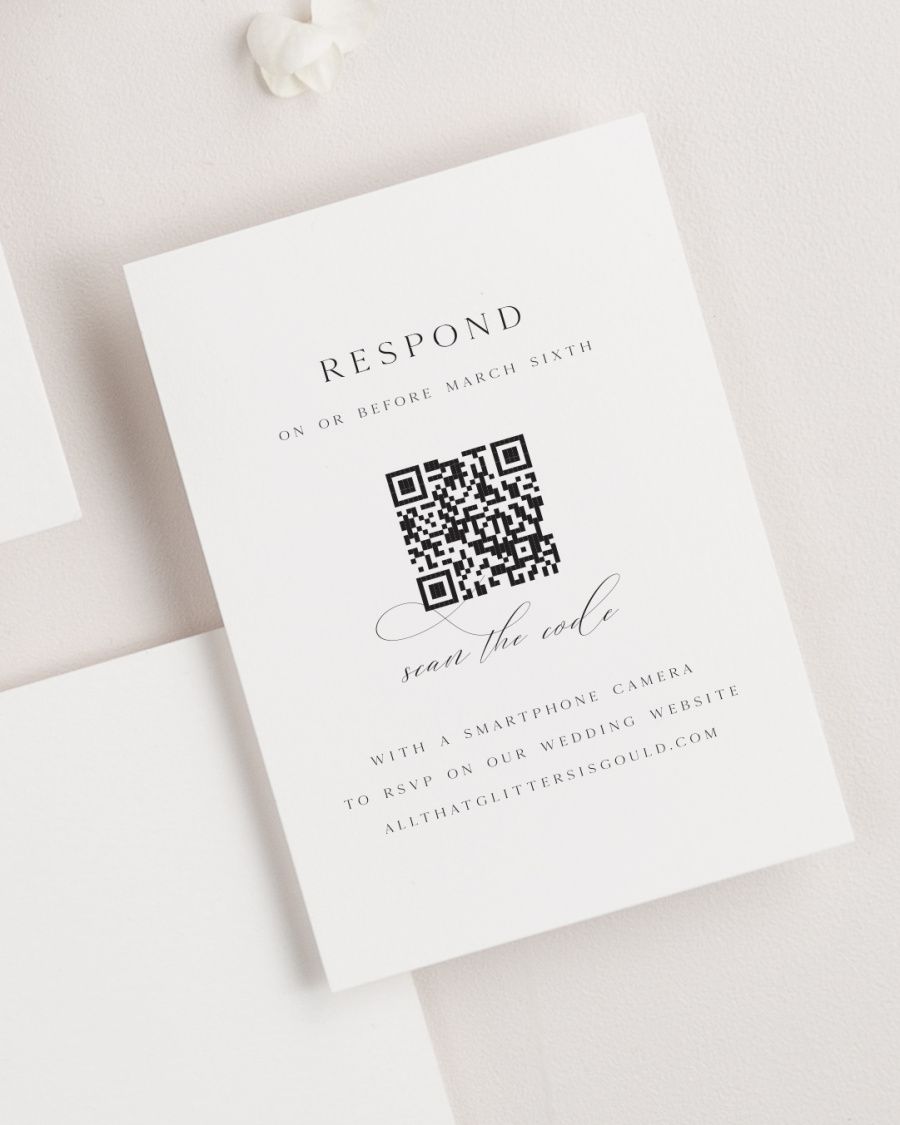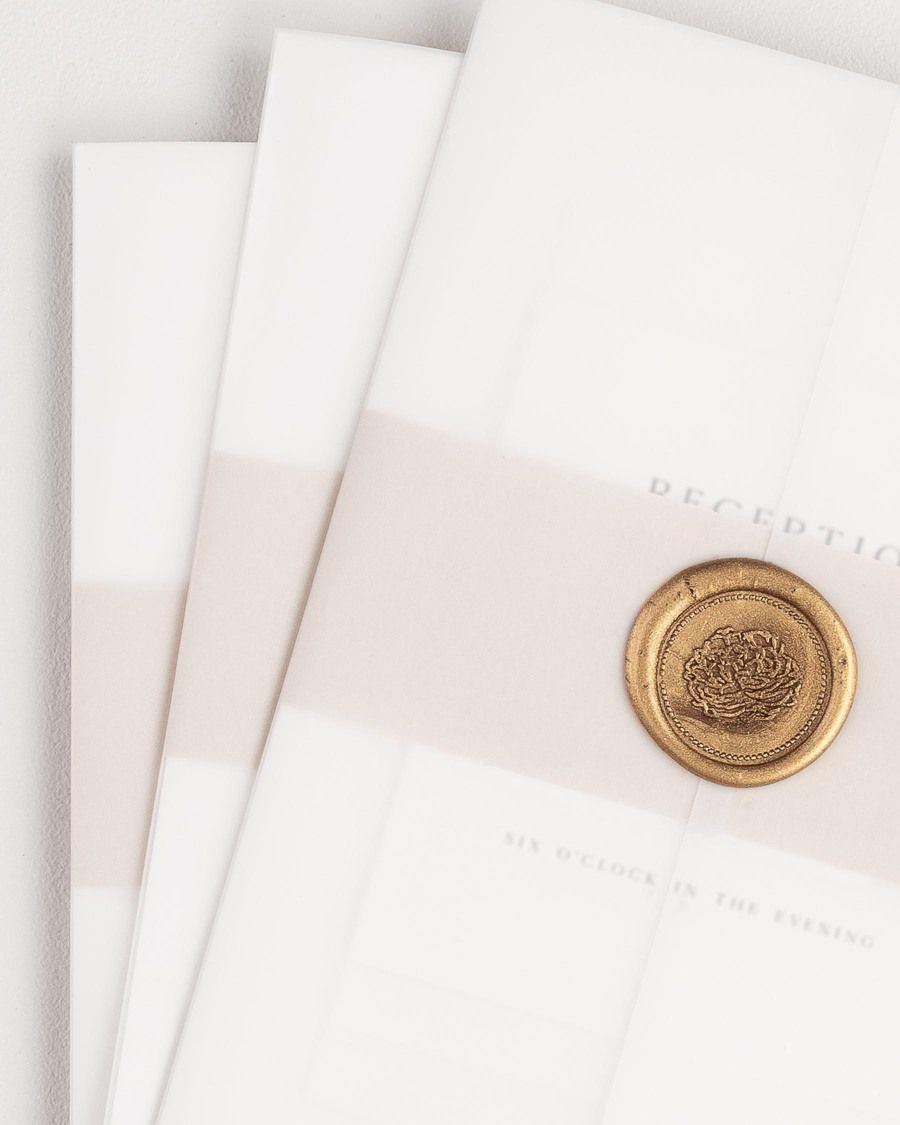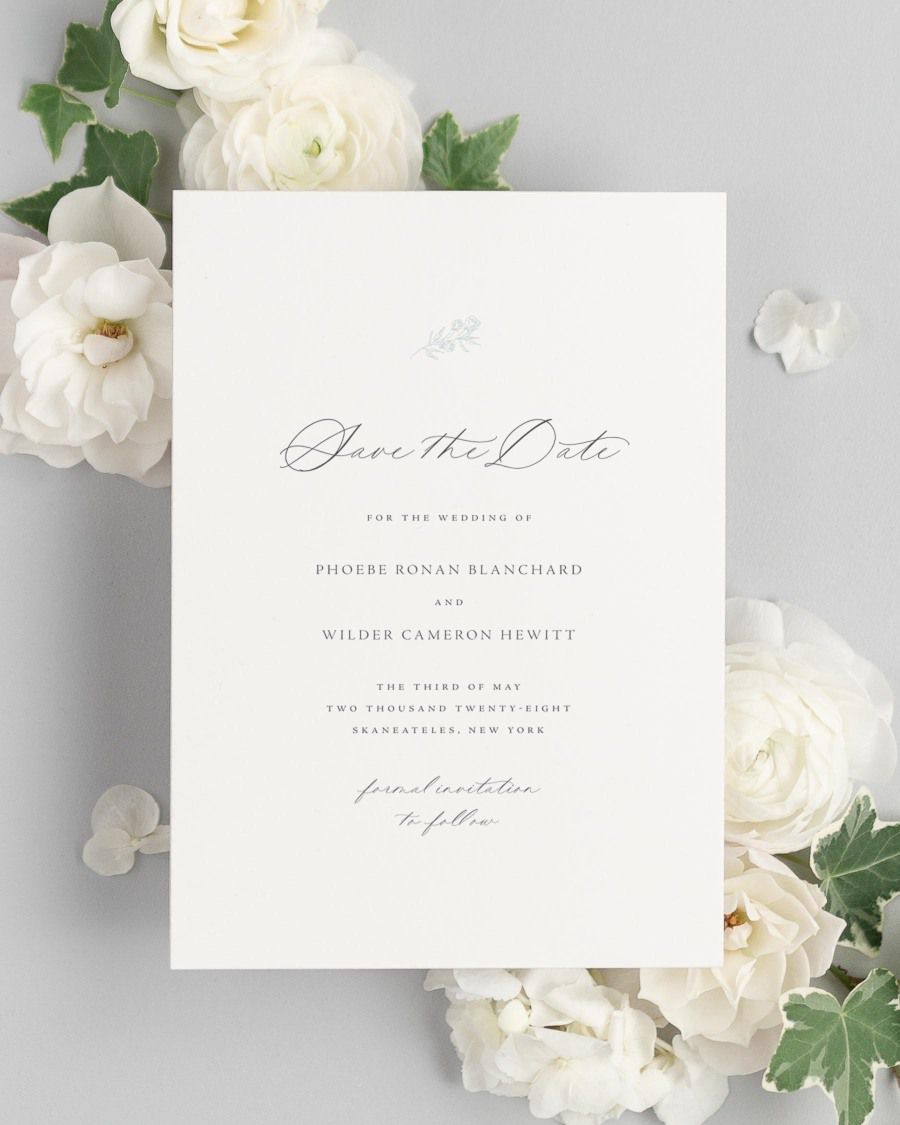Political activism was a huge part of the United States throughout the 1970s--from the women's movement to the first celebration of Earth Day, many parts of American life were rapidly changing. If there's anything to learn from this investigation of wedding invitations and announcements, it's that they truly stand the test of time. Even throughout enormous societal and economic change, wedding stationery has remained a staple of American life.
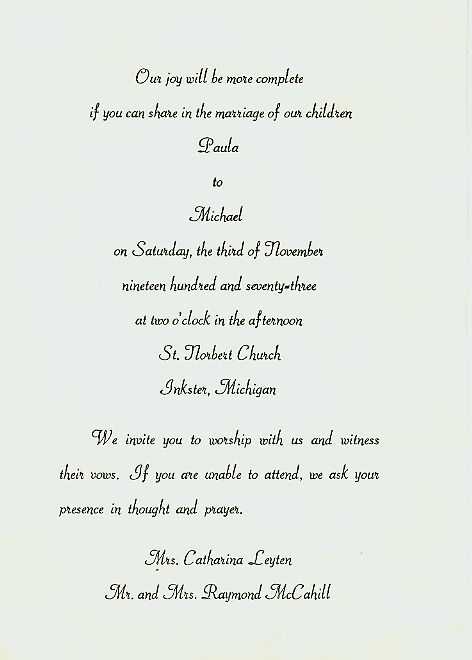
The format of this wedding invitation is completely different from anything we've seen so far. The invitation opens with a request line, and the way it's phrased clearly indicates that both the parents of the bride and parents of the groom are hosting the wedding. The day, time, and location of the wedding is then listed. There is a second request line, giving more details about the day of the ceremony and what they are asking of invitees. Lastly, the hosts names are listed on the invitation. This is not traditional wedding invitation wording, but it certainly still gets the point across.

The Bigger-Merlino wedding announcement from 1975 features an easily readable, casual script font. The content of the invitation is a little different from others we've seen. According to traditional etiquette, the bride and groom are listed as the hosts of the wedding. Their invitation line includes a statement about exchanging their vows in nature, highlighting their outdoor ceremony. After this, they list the date, time, and location of the ceremony. A standard reception line is included in the lower left-hand corner of the invitation.

Once again, we see a departure from traditional wedding invitation wording in this invitation from 1976. Both parents of the bride and groom are hosting the wedding, and they are listed first. Following the hosts are the request line and the bride and groom. Additional wording and detail is given about the union of the bride and groom, followed by the date, time, and location of the wedding. The address of the ceremony is listed on the invitation--a practice that seems to be gaining popularity in the 1970s. There is a left aligned reception line after the main portion of the invitation, but there is an additional center aligned statement at the bottom requesting thoughts and prayers from those who cannot attend the ceremony.

Lastly, we see another booklet style wedding invitation from 1977. This wording is a little more traditional and brings us back to familiar territory. The invitation opens with the host line, followed by the request line, bride and groom, date, time, location and address of the ceremony. A centered reception line and location follow the standard body text.
The most notable thing about 1970s wedding invitations is their deviation from traditional wording. In the invitations above, you can see how differently they talked about their wedding ceremonies from previous decades. They include more details (such as ceremony addresses) and personal wording--a clear change from the formal, sometimes stiff language of decades past. We also see both sets of parents hosting the weddings. A definite sign of changing times!
Sources: Marsh-Smith Wedding Announcement Leyten-McCahill Wedding Announcement Bigger-Merlino Wedding Announcement Wolford-Sisson Wedding Announcement Villarreal-Houser Wedding Announcement








Order a Custom Sample Set
Experience our papers, colors, and printing in person.
Not Sure Where to Start?
Take our styling quiz to find the right look and configuration for your stationery.
Bring Your Vision To Life
Browse our invitations and find the perfect design for your wedding.
A Difference You Can Feel
Make a statement with our luxurious letterpress wedding invitations
See Us Shine
Client visions brought to life #shinenewlywed


